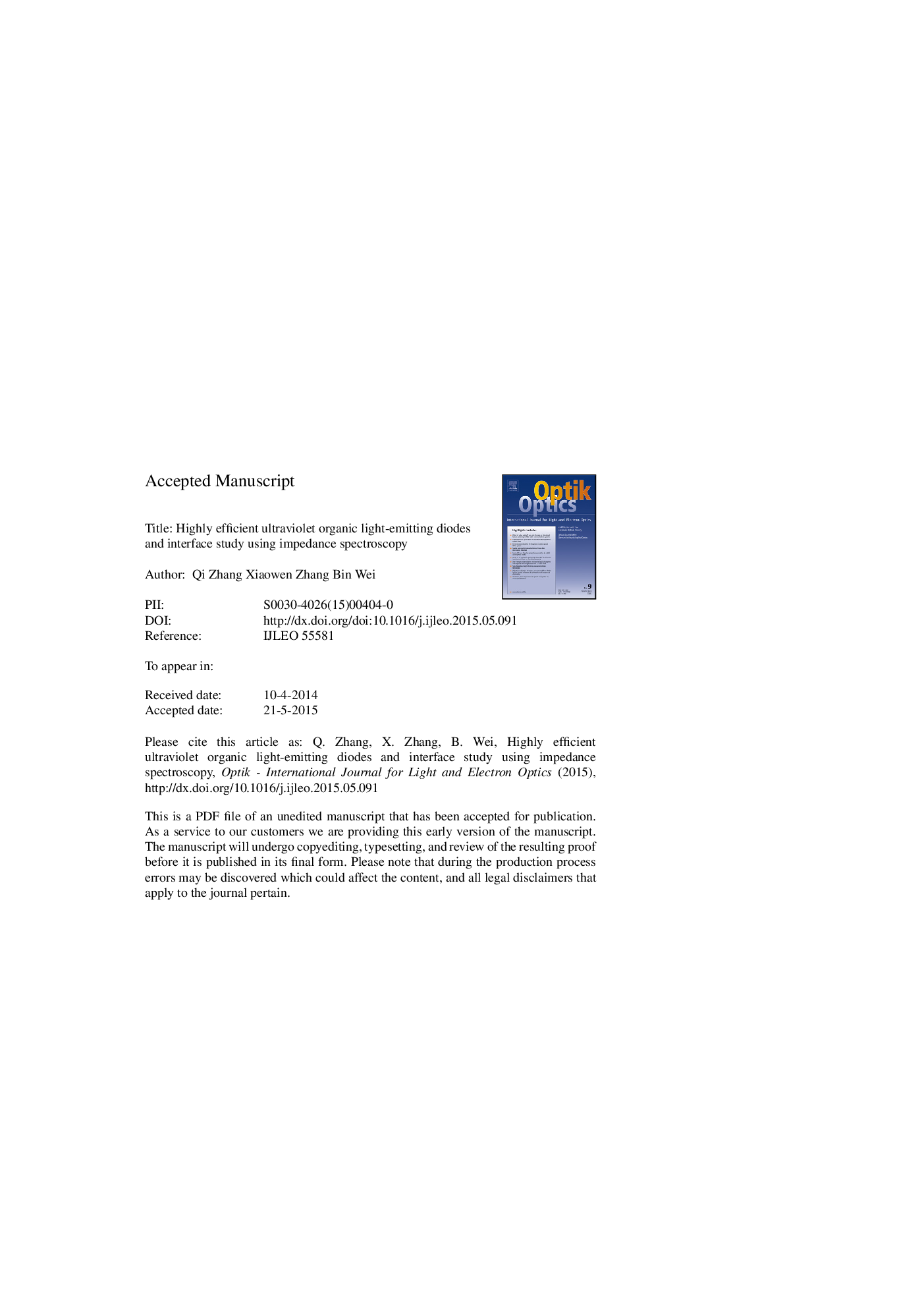| Article ID | Journal | Published Year | Pages | File Type |
|---|---|---|---|---|
| 848165 | Optik - International Journal for Light and Electron Optics | 2015 | 13 Pages |
Abstract
We have investigated the properties of ultraviolet organic light-emitting diodes (UV OLEDs) using an oxadiazole compound (OXD-7) as emitting materials and MoO3 as hole injection and buffer material. Results have demonstrated that the introduction of MoO3 can achieve a highly efficient UV OLED, which shows a high external quantum efficiency of 1.43% with a peak wavelength of 388Â nm. The impedance spectroscopy elucidates that the hole injection voltage is about 2Â V (via MoO3 interlayer) and 5Â V (without MoO3 interlayer), indicating that the MoO3 interlayer is critical to promote hole injection and achieve high device efficiency.
Related Topics
Physical Sciences and Engineering
Engineering
Engineering (General)
Authors
Qi Zhang, Xiaowen Zhang, Bin Wei,
